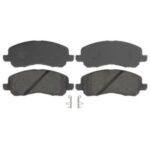The Caterpillar Timing Calibration Probe is a crucial tool for ensuring the optimal performance and emissions compliance of Caterpillar engines. This guide outlines the importance of timing calibration, the scenarios requiring it, and a step-by-step calibration procedure using the Caterpillar Electronic Technician (ET) and the specific probe.
Why is Timing Calibration Necessary?
The Engine Control Module (ECM) relies on precise timing information to control fuel injection and other critical engine functions. Timing calibration establishes the relationship between the timing wheel and the actual camshaft position, ensuring accurate engine operation for optimal fuel efficiency and emissions control. This process is essential for meeting stringent emission standards. A miscalibrated engine can lead to poor performance, increased fuel consumption, and excessive emissions.
When is Timing Calibration Required?
A timing calibration is only required after replacing the ECM (Engine Control Module), not after replacing speed/timing sensors. Performing a calibration to enhance performance in the absence of a diagnostic trouble code (DTC) 22-13 is unnecessary and will not yield any improvements. This code specifically indicates that the ECM has been replaced and requires timing calibration.
ECM Replacement Considerations:
-
AUG96 and Later Personality Modules: If both the old and new ECMs have personality modules with release dates of August 1996 or later, the ECM parameters and timing calibration can be transferred using Caterpillar ET. This eliminates the need for a manual timing calibration. However, this transfer requires communication between the existing ECM and Caterpillar ET.
-
DTC 22-13 (Check Timing Sensor Calibration): This code confirms the need for timing calibration after an ECM replacement. The ECM defaults to estimated timing values, resulting in suboptimal engine performance and emissions until calibration is completed. The system response will be the ECM using default timing leading to the engine not operating with calibrated timing.
Caterpillar Timing Calibration Procedure
Tools Required:
- Caterpillar Electronic Technician (ET) software
- 6V2197 Timing Probe
- 7X1695 Deutsch DT Timing Harness Adapter
- 2D6392 O-Ring Seal
Steps:
-
Install the Timing Adapter: With the ignition off, remove the timing calibration plug located on the left side of the engine, near the bottom of the ECM and in front of the flywheel housing. You may need to unbolt the ECM for access. Install the Timing Probe Adapter Sleeve into the plug hole.
-
Install the Timing Probe: Place the O-ring seal on the magnetic pickup sensor, lubricate it with clean engine oil, and insert it through the adapter until it contacts the flywheel timing ring. Withdraw the sensor 0.04 inches (1.0 mm) and tighten the adapter nut to secure the probe. Disconnect the Vehicle Speed/TC Calibration Connector (J24/P24) and connect the timing probe to the Deutsch DT adapter harness. Do not connect to the vehicle connector (P24) yet.
-
Warm Up the Engine: Start the engine and let it run at low idle until it reaches operating temperature and exits cold mode (indicated by the disappearance of “COLD MODE” on the ET screen). Address any active diagnostic codes before proceeding with calibration. Once warmed up, set the engine speed to a steady 1100 RPM using cruise control or the throttle.
-
Connect Caterpillar ET: Connect ET to the cab data link connector. Select the “Monitor/Calibrate Timing” screen. Maintain a steady engine speed of approximately 1100 RPM using cruise control or the throttle. Connect the Deutsch DT adapter harness to the Vehicle Speed/TC Connector (P24).
-
Calibrate the Sensors: Press the “space” key on the ET keyboard twice. The first press displays the “Timing Error” bar, and the second initiates calibration. ET will indicate when calibration is complete. If “COULD NOT CALIBRATE” appears, double-check connections, tool operation, and ensure the crankshaft and camshaft gears are correctly aligned. After successful calibration, disconnect the timing probe from connector P24 before exiting the “Monitor/Calibrate Timing” screen.
-
Disconnect and Exit: Disconnect the timing probe from the Vehicle Speed/TC Connector (P24). Exit the “Monitor/Calibrate Timing” screen in ET. The engine speed may drop to programmed low idle; this is normal.
Conclusion
Accurate timing calibration is paramount for the efficient and compliant operation of Caterpillar engines. Utilizing the Caterpillar timing calibration probe in conjunction with Caterpillar ET ensures precise timing settings after ECM replacement, leading to optimized performance, fuel economy, and adherence to emission regulations. Following this comprehensive guide will facilitate a successful calibration process.


